What is Trigonometry?
What is Trigonometry? Trigonometry is the study of triangles angles and sides in mathematics. By applying the rules of trigonometry, we can find unknown angles and side lengths in triangles and other shapes that can be broken down into triangles.
Who cares? Why do we need to know a triangles angles or side length? This is a fair question! Although on paper, trigonometry can feel useless, it is a great tool in solving real-world problems in architecture, astronomy, engineering, and even video game design! For example, what if we wanted to know the angle measure between our line of sight and the distance to the moon? Or what if wanted to find the perfect angle for a roof on a building? All of these questions would be answered using the beautiful subject of trigonometry.
Just like the word triangle, trigonometry includes the prefix “tri” meaning three. Three, the magic number in trigonometry as there also happens to be three main trigonometric functions (sine, cosine, and tangent) along with their inverses (secant, cosecant, and cotangent respectively). Sine, cosine, and tangent are the basic trig functions that allow us to find the values of angles and/or sides of a triangle of a right triangle.
History of Trigonometry
Where did trigonometry come from? The word trigonometry can be traced back to Greece, from the greek word “trignon” meaning triangle and the word “metron” which means to measure. Clearly trigonometry has history in Greece dating back to the 3rd century B.C. Although it has roots in Greek history, the subject can also be traced back to India in 5th century A.D. Each culture independently inventing trigonometry at first for astronomical purposes.
Basic Right Triangle Trigonometry
We have briefly touched upon the basic trigonometric functions (sine, cosine, and tangent), now let’s dive a little deeper and see how each function works with a right triangle!
Sine, Cosine, and Tangent, fondly known as Sin, Cos, and Tan are trigonometric functions that can be used to find angles and sides of right triangles (triangles with a 90º angle). Sin, Cos and Tan can be summarized by the very memorable acronym SOH CAH TOA:
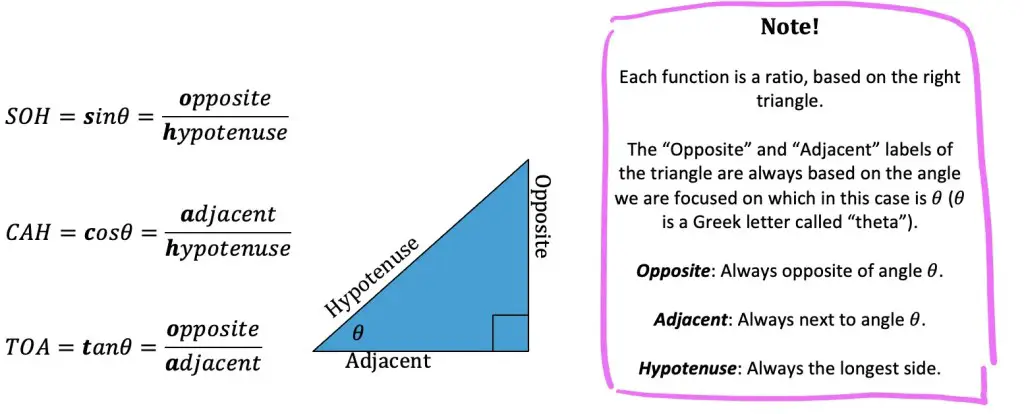
The greek letter, θ, pronounced “theta,” is used to represent unknown angles in trigonometry and can be paired with each trig ratio (sin θ, cos θ, tan θ) which is exactly wha you see above.
In order to use our trig functions, we need to define the different parts of a right triangle based on the location of the angle. There will always be an opposite side that is opposite to angle θ, an adjacent side that is next to angle θ. And the last remaining side, the only side that will always be labeled the same (regardless of the angle θ) is the longest side of a right triangle, which is called the hypotenuse.
Let’s try an Example:
Given the following right triangle, find sin30º .
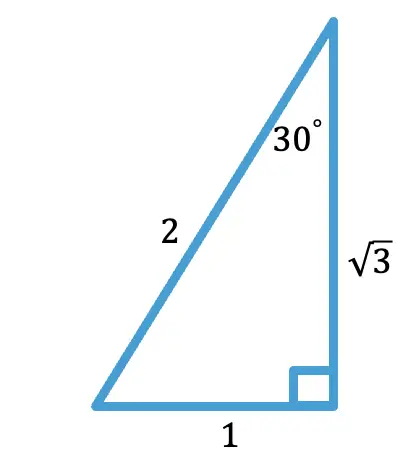
Step 1: Since we are going to find the sin30º, let’s write out our ratio for sine based on our acronym SOH CAH TOA.

Step 2: Now we must identify our opposite and hypotenuse based on our angle θ. Remember the opposite is the opposite side length in relation to our angle θ, which in this case is 1.
The hypotenuse is always the longest side, which in this case is 2.
(The adjacent leg is radical 3, but in the case of finding sine, we don’t need this value).
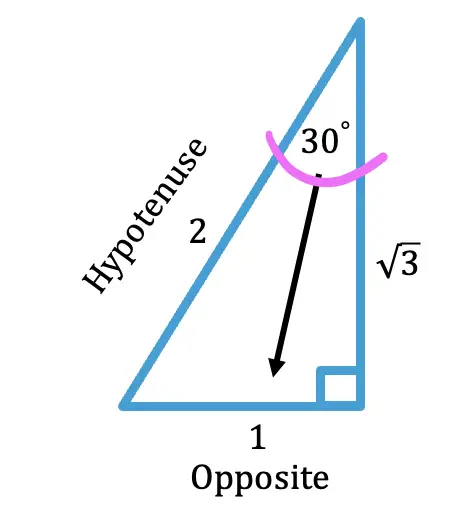
Step 3: Now that we have our values for the opposite (1) and hypotenuse (2), let’s plug them into our sin ratio for for our answer.
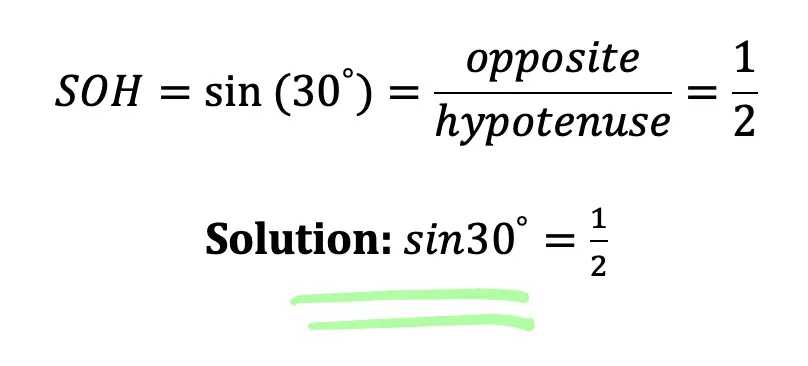
If you are looking for more right triangle and SOH CAH TOA practice questions similar to the one above, please check out the video and link here.
Inverse Trigonometric Functions:
Inverse Trigonometric ratios are the inverses of the regular trig functions (sin, cos, and tan) we just went over! Check it out below:
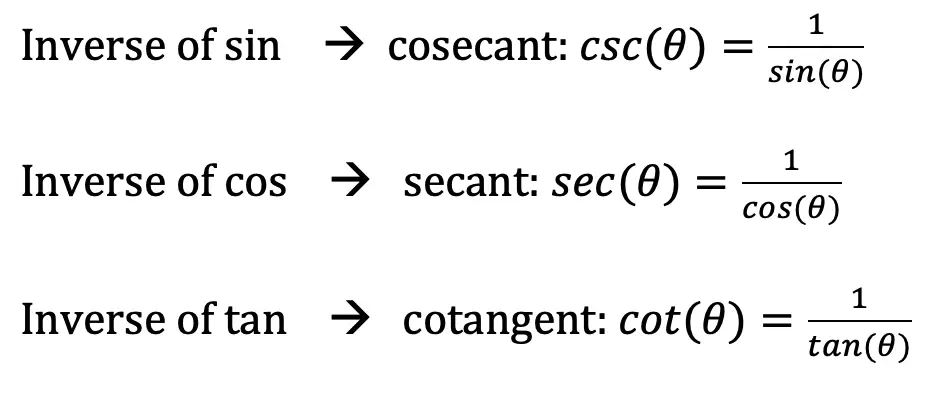
We solve inverse trigonometric functions, the same exact way we do regular trig functions, let’s take a look at an example below:
Find the exact value of csc45º
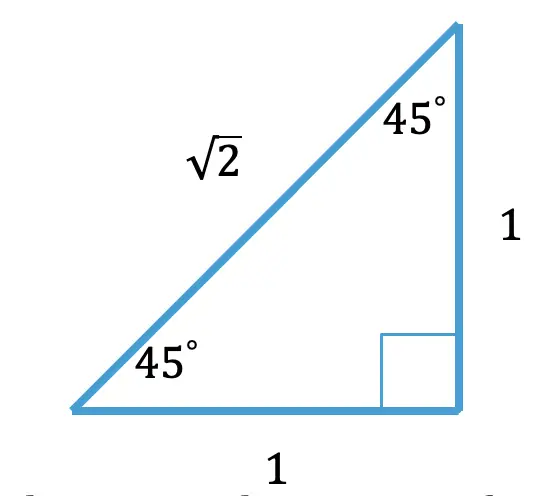
Step 1: We know thatCSC is the inverse of sin, which is equal to 1/sin , so let’s use some SOH CAH TOA action to solve for sin45º as normal, then flip our answer to find the value of csc45º.
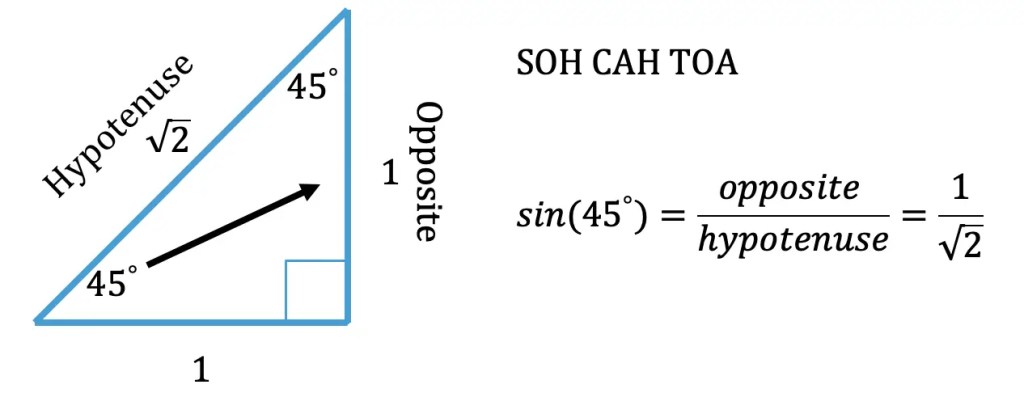
Step 2: Now all we need to do is “flip” the answer we got in Step 1 to get its inverse which will be the value of csc45º.
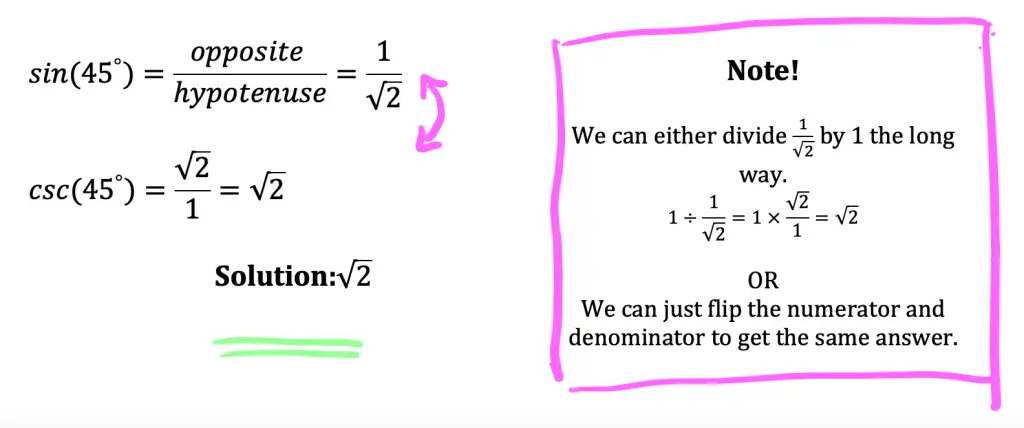
Unit Circle:
The Unit Circle is an important reference tool used throughout trigonometry to derive all sorts of formulas and explains how trig works in the first place!
Why is it called a unit circle?
Notice each point on the circle is one unit away from the origin below.
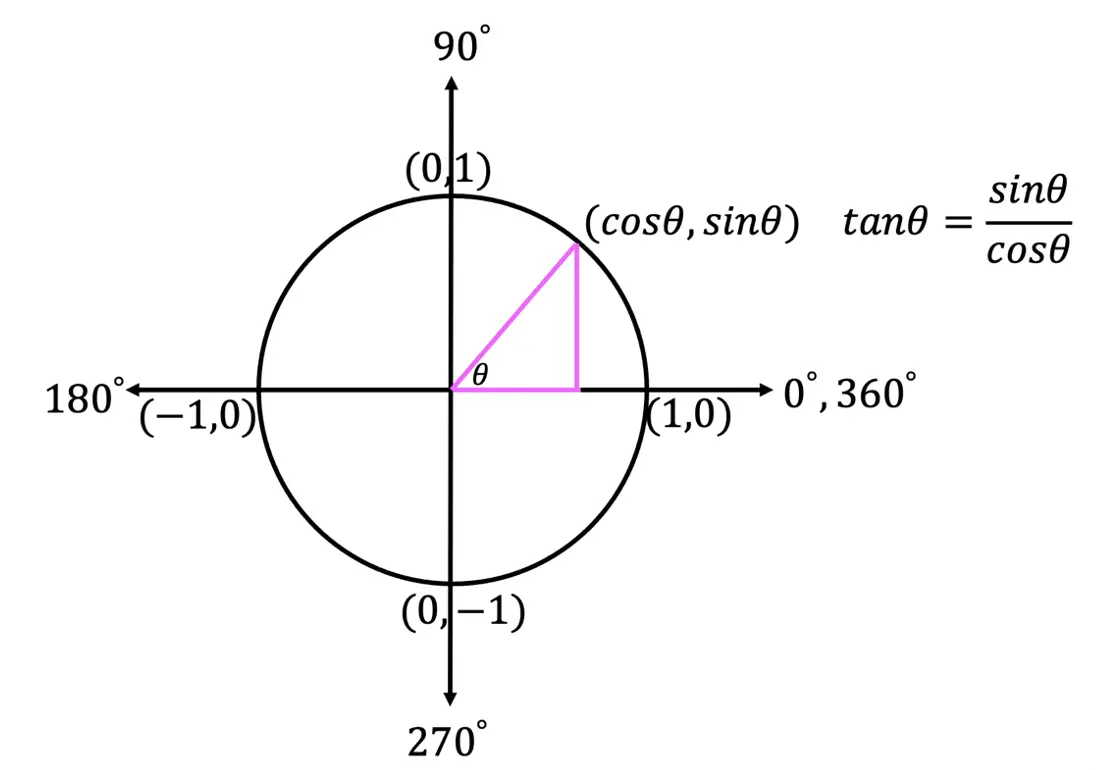
Why do the degrees go counter-clockwise?
A circle has 360º therefore, we can re-label the axis with 0º, 90º, 180º, 270º, and 360º . Notice the numbers go in a counterclockwise direction? This is based on the movement of the Earth around the sun, as it too travels counterclockwise. Fun fact: Astronomy and the study of the movement of the sun and the earth are the origins of trigonometry!
Other things to notice about the Unit Circle:
1. Degrees follow a counter-clockwise pattern from 0 to 360 degrees.
2. Values of cosine are represented by x-coordinates.
3. Values of sine are represented by y-coordinates.
4. Using the unit circle we can find the degree and radian value of trigonometric functions (SOH CAH TOA).
Trig Functions and Quadrants:
Based on finding angles via the Pythagorean Theorem using reference triangles within each quadrant we can identify, to see which trig functions (sin, cos, tan) are positive in which quadrant. Let’s see how step by step with a proof!
Step 1: To prove why certain trig functions are positive in specific quadrants, draw a unit circle and add triangles within each quadrant. Notice it kind of looks like a bow tie and we added an angle θ within each triangle as well, this will come in handy later!
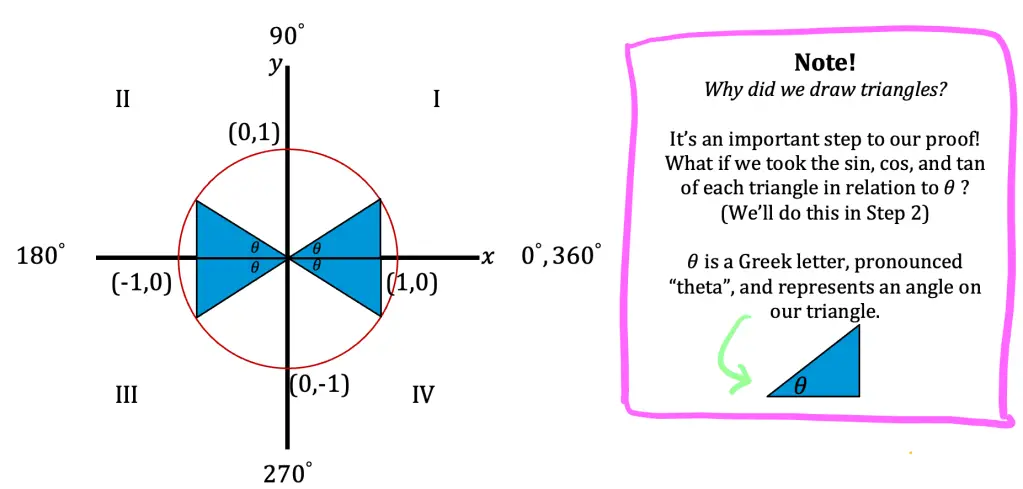
Step 2: Now we are going to find the trigonometric functions (sine, cosine, tangent) with respect to θ for each triangle in each quadrant. Let’s close up on our triangle in quadrant I.
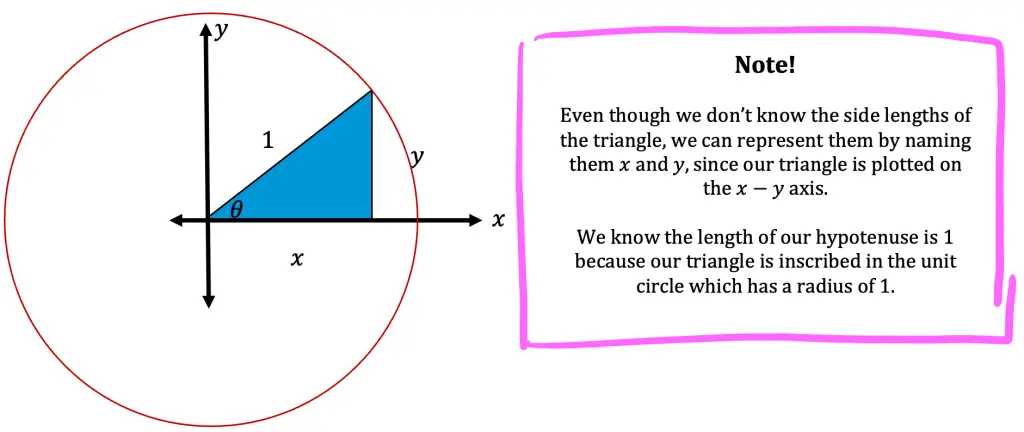
Notice the hypotenuse has a value of 1 because this is a unit circle, and “1” is the value of the radius.
We do not know the x and y values for this triangle, but we do know that both x and y will be positive values.
If we were to find sinθ, we would get:
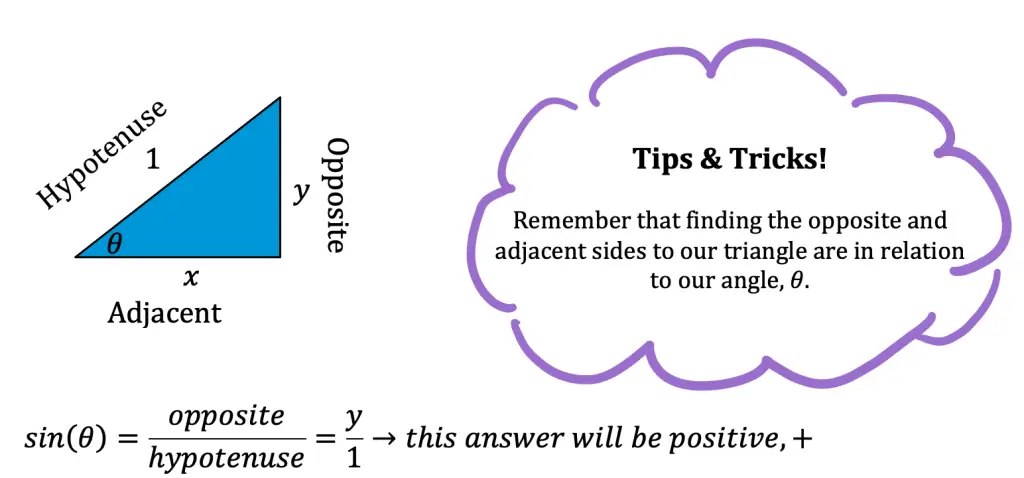
What if we found cosθ and tanθ for our Quadrant I reference triangle?

We just proved that all our trig functions are positive in Quadrant I! Check below to see about Quadrants II, III, and IV:
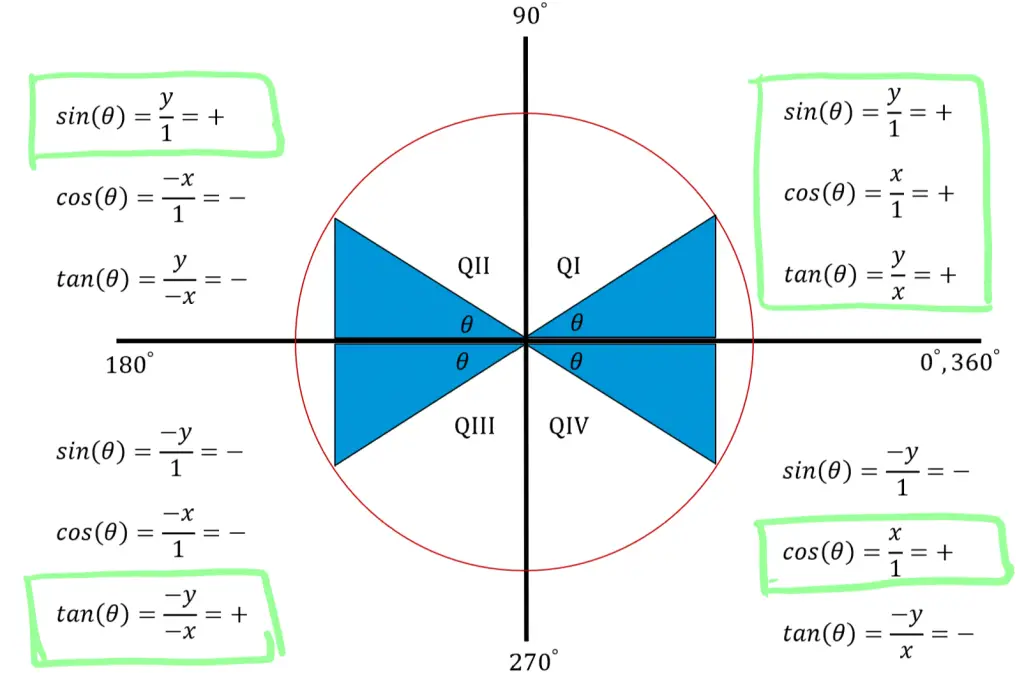
Things to notice:
Notice all the positive functions are hi-lighted in green.
Just like we proved Quadrant I to be positive for all trig functions, the above diagram shows that only sin is positive in QII, only tan is positive in QIII and only cos in QIV.
We derived each, by using SOH CAH TOA on each reference right triangle with respect to θ.
There is much more to be discovered about the unit circle, if you are interested in learning more, please check out the video below and link here!
Graphing Trig Functions:
We’ve seen the unit circle, now I have to wonder, what do trig functions (sin, cos, tan) look like when they are graphed on a coordinate plane? Get ready because they look pretty cool and the visualizations of these trig functions may surprise you!
Have you ever heard of a sine wave? A radio wave? That’s exactly what trig functions graphs look like because that is what they are!
Sin Graph: Sine function curves creates what looks like an “S” shape. As they say, “S” is for Sine, this is the easiest way to remember what the sine function looks like, check it out below!

Cosine Graph: While Graphing Cosine, you may notice that the cosine function creates what looks like a “V” shape. As they say, “V” is for victory, but of course, in this case, it is for cosine!

Tangent Graph: The tangent function looks totally different graphed when compared to sine and cosine. You may notice the dotted vertical lines below, these are called asymptotes and no values can exist here, check it out below!
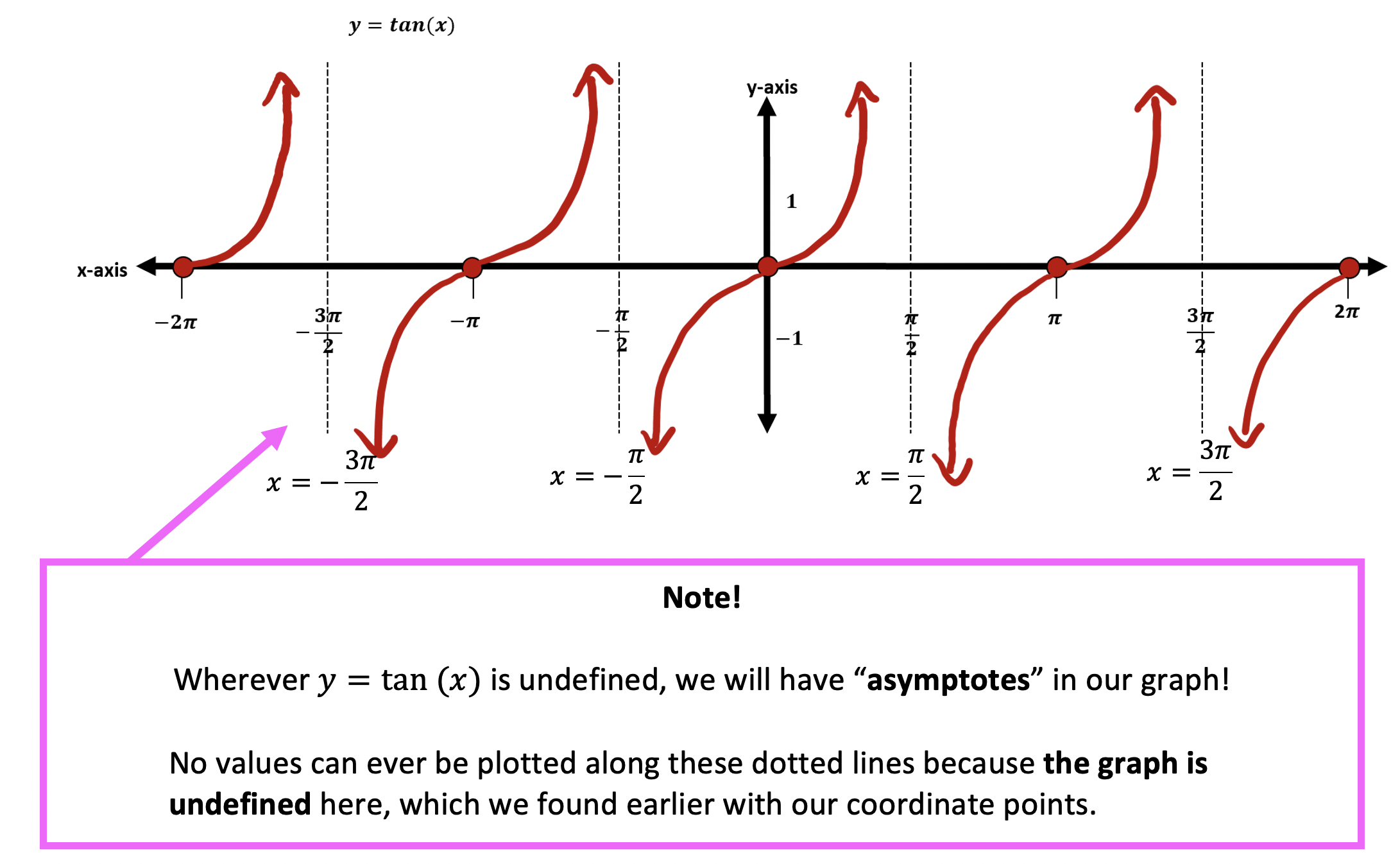
Why do trigonometric function graphs look this way? Derive and learn why trig ratios graphed look unique and more here. And if you want to learn how to transform a trig graph, check out this link here.
Special Triangles:
Special triangles, otherwise known as the superheroes of trigonometry, are a valuable reference tool for solving trigonometric functions. The special triangles include the 30 60 90 triangle and the 45 45 90 triangle. Each of the right triangles you are about to see can be derived from the unit circle.
By knowing the below special triangles, we can answer questions such as “find the value of sin45º and cos45º without using a calculator.” Special triangles will save the day when it comes to finding the unknown values of angles in a triangle. Now, let’s look at our very special triangles below:
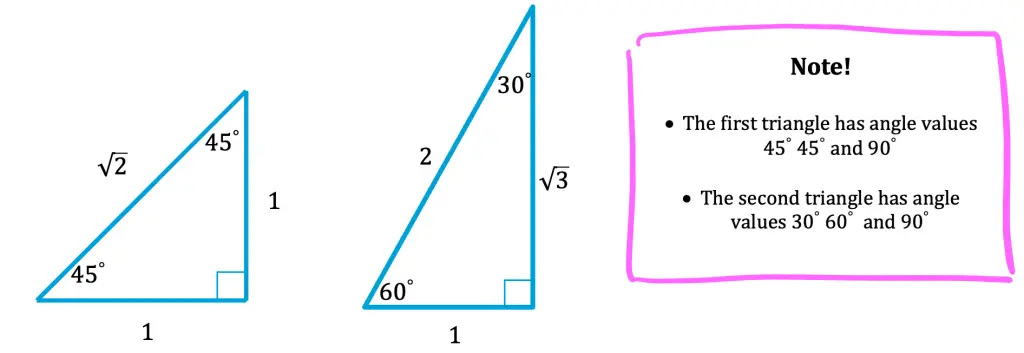
Trigonometric Identity:
Throughout trigonometry, there are many trigonometric identities that are derived which help solve proofs as well as make factoring linear/quadratic trig equations easier. Below is a sample of the trigonometric identities you will come across in this subject:
Inverse Identities:

Ratio Identities:

Pythagorean Identity:

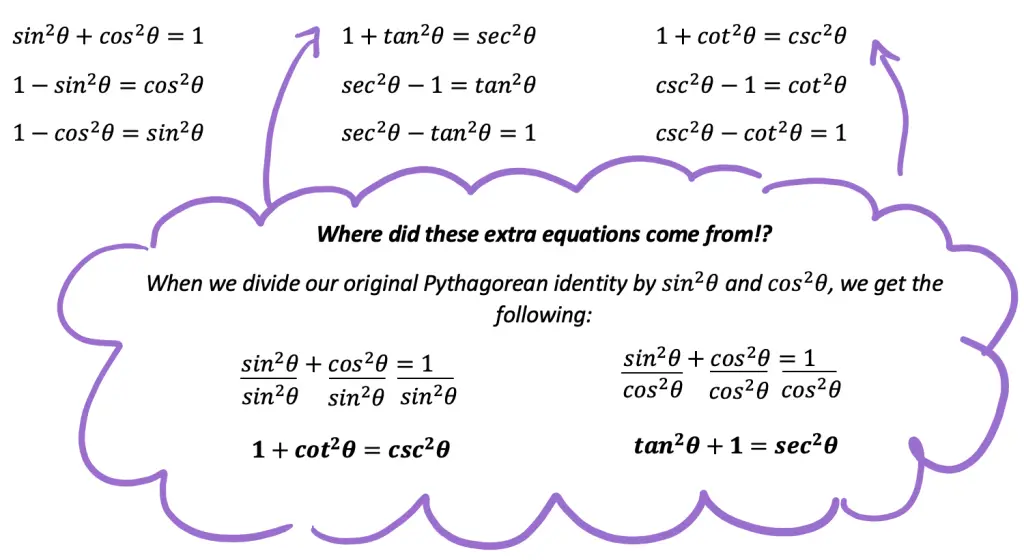
If you are looking for more information on trigonometric identities, please check out the video below and practice questions here!
Finding Angles and Sides in Non-Right Triangles:
How would we find an unknown angle or side of a triangle, when the triangle is NOT a right triangle? The answer is to use the law of sines or the law of cosines. How do I know when to use the law of sines versus the law of cosines? It all depends on the information of the triangle that is given to us of course! See the differences below:
Law of Sines: Use when given ASA, AAS, and ambiguous case SSA of a triangle.
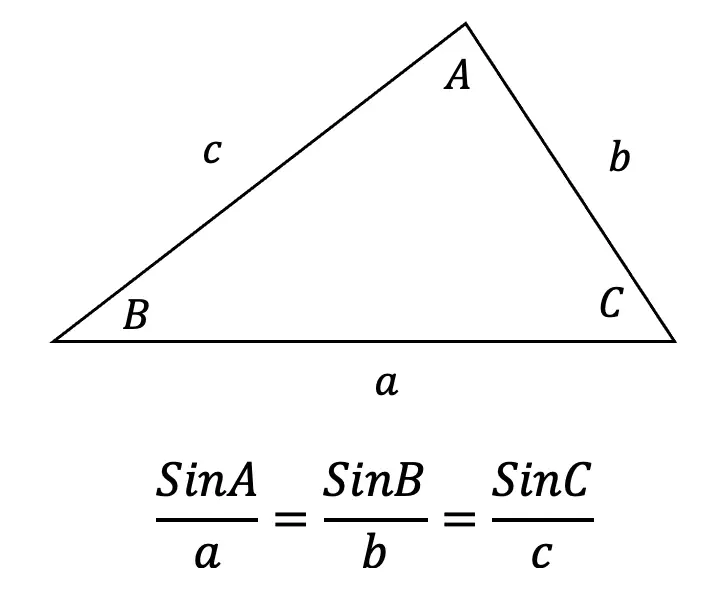
Law of Cosines: Use when given SSS or SAS of a triangle.

a2 = b2 + c2 -2bcCosA
b2 = a2 + c2 -2acCosB
c2 = a2 + b2 -2abCosC
Still got questions? Have a favorite part of trigonometry you want to share? Don’t hesitate to email or comment below! Also, don’t forget to follow us on social media to get the latest and greatest MathSux lessons, videos, questions, and more. Happy Calculating!

3 thoughts on “What is Trigonometry”